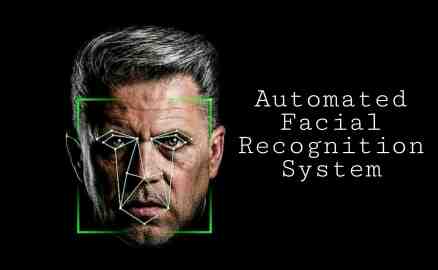Automated Facial Recognition System
The National Crime Records Bureau (NCRB) would like to use automated facial recognition to identify criminals, missing people, and unidentified dead bodies, as well as for “crime prevention”.
About Automated Facial Recognition System (AFRS)
• AFRS is a software that recognises, records and matches face against various databases from photos and videos taken from public and private sources.
• AFRS will be a mobile and web application hosted in NCRB’s (which manages data for police) data centre in Delhi but used by all police stations in the country.
• AFRS works by comparing the new image of an unidentified person often taken from CCTV footage with the existing database (AFRS maintains a database with photos and videos of people’s faces) to find a match and identify the person.
• NCRB has proposed integrating automated facial recognition system with multiple existing databases like:
- Crime and Criminal Tracking Network & Systems (CCTNS)
- Inter-operable Criminal Justice System (ICJS)
- State-specific database systems
- Immigration Visa Foreigner Registration Tracking (IVFRT)
- Khoya Paya portal
CCTNS
• It was conceived as a project under the National e-Governance Plan (NeGP) of Govt. of India.
• The Ministry of Home Affairs (MHA) launched CCTNS in order to facilitate police in States/Union) with a common platform for filing reports, collecting and sharing information on crimes and criminals at national level.
ICJS
• ICJS was launched by the Supreme Court of India in 2018.
• It is an ambitious project aiming to integrate the Crime and Criminals Tracking Network and Systems (CCTNS) project with the e-courts and e-prisons databases, as well as with other pillars of the criminal justice system such as Forensics, Prosecution, and Juvenile homes in a phased manner.
Khoya Paya Portal
• Khoya Paya portal is a citizen-based website to exchange information on missing and found children developed by the Ministry of Women and Child Development and the Department of Electronics and Information Technology (DeitY).
Concerns Related to Automated Facial Recognition System (AFRS)
1. A threat to privacy of the citizens in the absence of data protection law.
2. The accuracy of the technology is highly questionable.
3. It makes data protection close to impossible as it is predicated on collecting publicly available information.
4. The system can constrict the rights of particular class of people.
5. In the absence of safeguards, law enforcement agencies will have a high degree of discretion. The Personal Data Protection Bill 2018 is yet to come into force, and even if it does, the exceptions contemplated for state agencies are extremely wide.
Way Forward:
AI and facial recognition technology are only growing and they can be powerful and helpful tools when used correctly, but can also cause harm with privacy and security issues. A deliberative approach will benefit Indian law enforcement, as police departments around the world are currently learning that the technology is not as useful in practice as it seems in theory. Police departments in London are under pressure to put a complete end to use of facial recognition systems following evidence of discrimination and inefficiency. San Francisco recently implemented a complete ban on police use of facial recognition.
What is National Crime Records Bureau ?
• NCRB was set-up in 1986 to function as a repository of information on crime and criminals so as to assist the investigators in linking crime to the perpetrators based on the recommendations of the Tandon Committee to the National Police Commission (1977-1981) and the Ministry of Home Affairs’ Task force (1985).
• Subsequently, NCRB was entrusted with the responsibility for monitoring, coordinating and implementing the Crime and Criminal Tracking Network & Systems (CCTNS) project in the year 2009.
The project connects 15000+ police stations and 6000 higher offices of police in the country.
• In 2017, NCRB launched National Digital Police Portal.It allows search for a criminal / suspect on the CCTNS database apart from providing various services to citizens like filing of complaints online etc.
• The Bureau has also been entrusted to maintain National Database of Sexual Offenders (NDSO) and share it with the States/UTs on regular basis. NCRB has also been designated as the Central Nodal Agency to manage technical and operational functions of the ‘Online Cyber-Crime Reporting Portal’ through which any citizen can lodge a complaint or upload a video clip as an evidence of crime related to child pornography, rape/gang rape.
• NCRB also compiles and publishes National Crime Statistics i.e. Crime in India, Accidental Deaths & Suicides and also Prison Statistics.
• The Central Finger Print Bureau (CFPB) under NCRB is a national repository of all fingerprints in the country and has more than one million ten-digit finger prints database of criminals both convicted and arrested and provides for search facility on Fingerprint Analysis and Criminal Tracing System (FACTS). Through the proposed National Fingerprint Identification System (NAFIS) in near future, all States will be able to upload and search finger prints directly online to NCRB. CFPB publishes ‘Finger Prints in India’ annually.






0 Comments
Feel free to ask any doubt in comment section